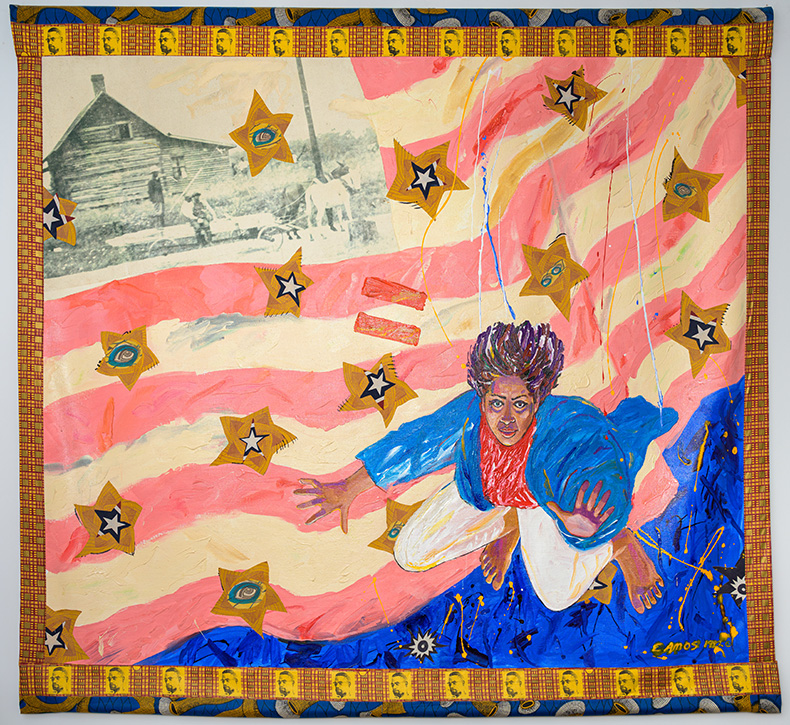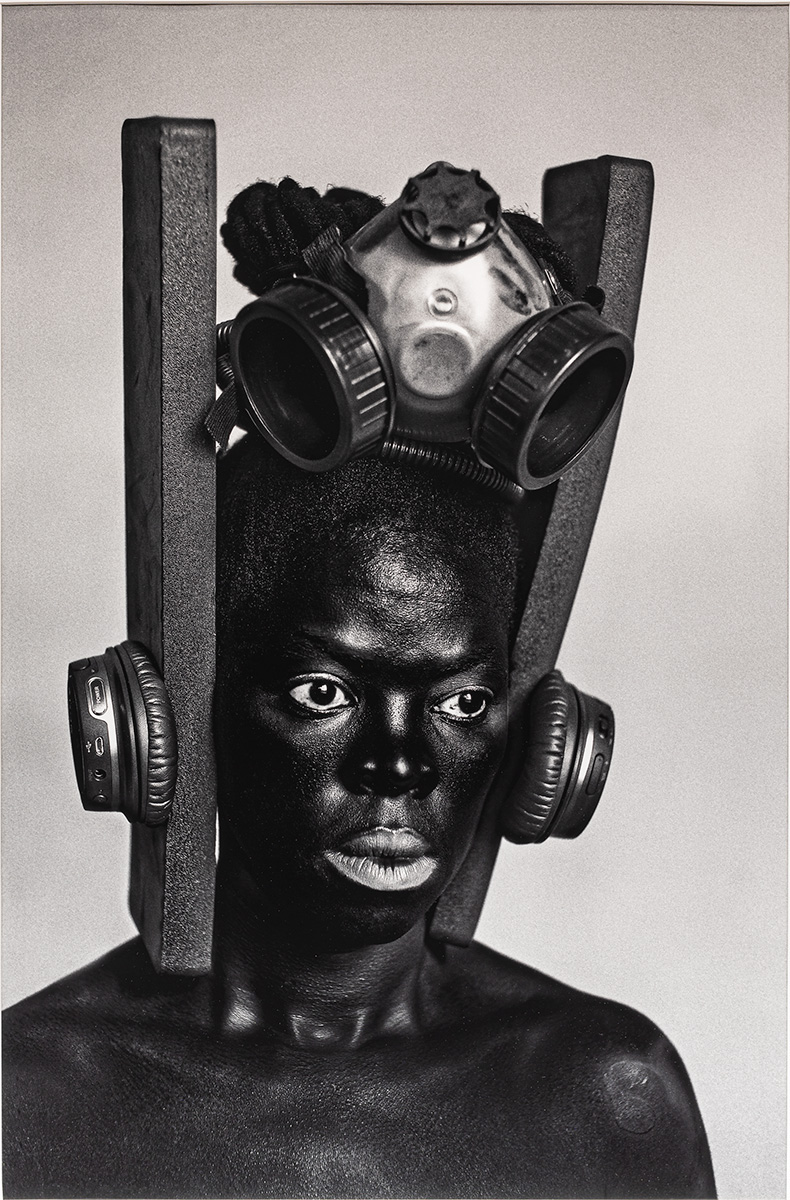Apollo’s monthly survey of the most exciting works to enter public collections shines a light on the gaps museums have been able to plug and the new stories they are looking to tell
Detroit Institute of Arts
Equals (1992), Emma Amos
A key figure among New York-based communities such as the Spiral Group and Guerrilla Girls, Amos remained dedicated to fighting sexism and racism within the art world throughout her career. While very few of Amos’s works entered museum collections during her lifetime (Amos died in 2020), the recent acquisition of the Equals (1992) by the Detroit Institute of Arts reflects an increasing interest in the artist’s oeuvre. The acquired work forms part of a series produced between 1988–92, featuring falling figures which are thought to reflect the turbulence Amos identified in African American life.
Equals (1992), Emma Amos. Detroit Institute of Arts

National Trust
Viscount Castlereagh’s silver inkstand (c. 1800s)
The National Trust has acquired a silver inkstand owned by Robert Stewart, Viscount Castlereagh (1769–1822). As Britain’s Foreign Secretary and one of the chief negotiators in post-Napoleonic Europe, Castlereagh’s inkstand would have been used to pen missives to notable figures such as Tsar Alexander I of Russia and the Duke of Wellington. The object is also thought to have been sitting on Castlereagh’s desk during the statesman’s famous interview with Admiral Nelson before he departed for the Battle of Trafalgar. Engraved with the Castlereagh coat of arms, the inkstand will be displayed at Mount Stewart in County Down, Northern Ireland.
Viscount Castlereagh’s inkstand. Photo: James Dobson; courtesy The National Trust

Metropolitan Museum of Art, New York
Still Life with a Vase of Flowers, Melon, Peaches and Grapes (1780), Charlotte Eustache Sophie de Faligny Damas
One of the artist’s closest friends, the Italian neoclassical sculptor Antonio Canova, once described this French painter as the ‘Raphael of flower painting’. However, Damas never exhibited or sold any work during her lifetime; her acclaim was limited to her affluent inner circle which included the rococo portrait painter Élisabeth Vigée Le Brun. The still life, recently acquired by the Met, is one of the only works known to be held in museum collections worldwide.
Hirshhorn Museum and Sculpture Garden, Washington, D.C.
Ninety-five works by 60 artists
The Hirshhorn’s latest acquisitions represent the institution’s efforts to expand and diversify their permanent collections. They include photographs from Zanele Muholi’s series Somnyama Ngonyama, Hail the Dark Lioness (2014–ongoing) – the South African artist’s long-standing efforts to confront the politics of race through the act of self-portraiture – and Rose B. Simpson’s large-scale ceramic installation Countdown I which becomes the first work by a Native American woman to enter the museum’s collection. Additions to the museum’s sculpture garden include Maren Hassinger’s Monuments 1 (2020), made from woven branches.
Namhla at Cassilhaus, Chapel Hill, North Carolina (2016), Zanele Muholi. Courtesy the Hirshhorn Museum and Sculpture Garden; photo: Tex Andrews; © the artist

Meadows Museum, Dallas
Saint Francis (1635), Francisco de Herrera the Elder
The latest acquisitions by the Meadows Museum in Dallas include seven works of Spanish art, three paintings and four works on paper, ranging from the 17th to 20th century. Saint Francis (1635) by the Seville school painter Francisco de Herrera becomes the first work by the artist to enter the museum’s collections. A recent X-ray examination of the work has revealed the artist’s original sketches, which show Saint Francis in profile, while the final composition takes a rather more mournful tone, depicting a skull, knotted cord and the Saint’s hands in prayer. The work was donated to the museum, along with Román Ribera Cirera’s Leaving the Ball (1901), and Antonio Rodríguez Luna’s Still Life (1981), in celebration of the life and leadership of Dr. Mark A. Roglán, the museum’s former director who died last year.
Minneapolis Institute of Art
The Virgin and Child with Saint Andrew, Saint Eustace, Saint John the Baptist, and Saint Catherine (c. 1470–80), Fernando Gallego
An unusual triptych by the religious painter Fernando Gallego (1440–1507) joins the Minneapolis Institute of Art’s expanding collections of Spanish art. Painted in the Hispano-Flemish style, Gallego’s works are renowned for their impassioned figures and warm colour palettes. Appearing in its original frame, this devotional painting depicts the Madonna and Child surrounded by four saints. The work is thought to have been made for private devotion, either for a residence or as a travelling altar.


